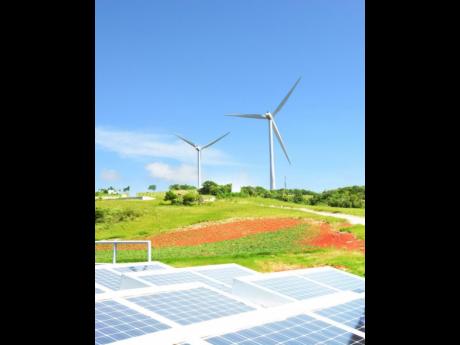Jamaica back on the hunt for renewable energy investors
GPE tenders 100MW of power supplies
The Government of Jamaica has finally invited bids from investors for the provision of an additional 100 megawatts of renewable energy capacity, ending a yearslong wait by the sector. It comes amid refreshed plans and a more ambitious goal to...
The Government of Jamaica has finally invited bids from investors for the provision of an additional 100 megawatts of renewable energy capacity, ending a yearslong wait by the sector.
It comes amid refreshed plans and a more ambitious goal to achieve a 50 per cent target for renewables by 2030 in a remix of the energy grid. The requests for proposal have been issued through the Generation Procurement Entity or GPE.
“This procurement signifies a step toward a cleaner and more sustainable energy future for Jamaica,” GPE said in the tender document.
The 100MW to be supplied would grow renewables from 187MW or 12 per cent of Jamaica’s total electricity grid to 287MW or about one-third of the grid.
To hit the 50 per cent target, renewables would need to grow further to around 400MW, based on the current size of the total electricity grid. The overall capacity stands at 789MW, according to the latest disclosures in filings by grid operator Jamaica Public Service Company.
Currently, the main sources of renewable energy are in the form of wind at 101MW, solar at 58MW, and hydro at 28MW.
The investors currently being sought will be required to build, own and operate the new renewables power generating plants. GPE will allow bids for one energy source or hybrid combinations.
The proposals due by February 1, 2024 may or may not include storage which are batteries that hold the power generated during peak periods for use during low periods, such as at night for solar.
Successful bidders will supply the national grid with electricity under contract known as PPAs or power purchase agreements with monopoly distributor JPS. They will also be to pay a deposit upfront, the size of which will be determined by the scope of their project.
Projects may vary in size from 5MW to 50MW of net capacity.
“As of the execution date of the power purchase agreement, the company shall furnish a construction security deposit for an amount equivalent to US$100,000 per MW of the complex,” said the GPE document.
The last time Jamaica tendered for renewable energy supplies was in 2015 for 37MW of capacity. Prior to that, in 2012 the government sought investors to develop 115MW of renewable power but only assigned 78MW in total to three successful bidders, including Eight Rivers which built a large solar farm in Westmoreland.
“No comment,” said Eight Rivers principal Angella Rainford when asked if her company would bid this time around.
Rainford diversified her firm away from sole reliance on Government projects, during the eight-year hiatus. Through a company called Soleco, she and her partners supply solar solutions for large and industrial clients.
“The market is looking at both strategies – distributed power and at the utility-scale,” she said regarding how renewable firms now assess business opportunities.
Most of Jamaica’s energy is generated from liquefied natural gas and oil, which make up 88 per cent of the energy grid. Renewables account for the other 12 per cent.
“This 12 per cent can be further divided into wind power at 6.0 per cent, solar power at 3.0 per cent, and hydro power at 3.0 per cent,” stated GPE.
However, it didn’t say how closer the 100MW would take Jamaica towards the target of 50 per cent.
“We will not make it to the target of 50 per cent of the island’s electricity coming from renewables by 2030 at this rate,” said one renewable firm operator, who explained that timelines between the release of new requests for proposals make the target of 50 per cent unlikely.
“If we are going to have to wait five to six years between each renewable capacity addition, then 50 per cent by 2030 is just not going to happen,” the person said.
Both the GPE and JPS documents reference the renewable capacity provided by independent power providers, amounting to 156MW. It grows to 187MW, once the 31MW of renewables owned by JPS is added to the mix.
Renewable projects once fell under the ambit of the Office of Utilities Regulation but that function was transferred several years ago to the Generation Procurement Entity, which was created under the amended Electricity Act of 2015.


